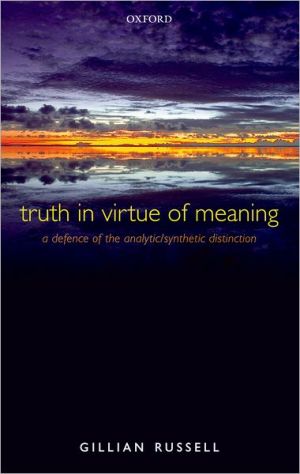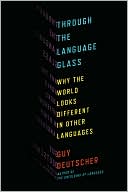Truth in Virtue of Meaning: A Defence of the Analytic/Synthetic Distinction
The analytic/synthetic distinction looks simple. It is a distinction between two different kinds of sentence. Synthetic sentences are true in part because of the way the world is, and in part because of what they mean. Analytic sentences--like all bachelors are unmarried and triangles have three sides--are different. They are true in virtue of meaning, so no matter what the world is like, as long as the sentence means what it does, it will be true. \ This distinction seems powerful because...
Search in google:
The analytic/synthetic distinction looks simple. It is a distinction between two different kinds of sentence. Synthetic sentences are true in part because of the way the world is, and in part because of what they mean. Analytic sentences - like all bachelors are unmarried and triangles have three sides - are different. They are true in virtue of meaning, so no matter what the world is like, as long as the sentence means what it does, it will be true. This distinction seems powerful because analytic sentences seem to be knowable in a special way. One can know that all bachelors are unmarried, for example, just by thinking about what it means. But many twentieth-century philosophers, with Quine in the lead, argued that there were no analytic sentences, that the idea of analyticity didn't even make sense, and that the analytic/synthetic distinction was therefore an illusion. Others couldn't see how there could fail to be a distinction, however ingenious the arguments of Quine and his supporters. But since the heyday of the debate, things have changed in the philosophy of language. Tools have been refined, confusions cleared up, and most significantly, many philosophers now accept a view of language - semantic externalism - on which it is possible to see how the distinction could fail. One might be tempted to think that ultimately the distinction has fallen for reasons other than those proposed in the original debate. In Truth in Virtue of Meaning, Gillian Russell argues that it hasn't. Using the tools of contemporary philosophy of language, she outlines a view of analytic sentences which is compatible with semantic externalism and defends that view against the old Quinean arguments. She then goes on to draw out the surprising epistemological consequences of her approach.
Preface ixAcknowledgements xiiiIntroduction 1The Positive ViewThe 'in virtue of' Relation 29The Two-Factor Argument 29Disambiguating 'in virtue of' 32Collapse into Necessity? 37Meaning 43The Language Myth 43Kripke and Kaplan 47Truth in Virtue of Reference Determiner 52Examples of Analytic Truths 57Two Objections and a Serious Problem 66Beyond Modality 71The Problem 71Semantics and Modality 72Strict Truth in Virtue of Meaning 82The Definition of Analyticity 99Examples 104The Formal System 109Preliminaries 109The Language 117Semantics 119Content, Validity and Reference Determiners 121Some Theorems 122A DefenseThe Spectre of "Two Dogmas" 129The Circularity Objection 129The Argument from Confirmation Holism 135Definitions 143The Transience ofDefinition 144Rethinking Definitions 146Definitions as Postulates 157Conventions of Notational Abbreviation 159More arguments against analyticity 163The Regress Argument 163The Indeterminacy of Translation 170Two Arguments from Externalism 175An Argument from Vagueness 177Blue Gold, Robot Cats 180Work for EpistemologistsAnalytic Justification 195A Priori Justification 196Analytic Justification 198Theory 1: Naive Analytic Justification 199Theory 2: Nihilism about Analytic Justification 202The Problem of Semantic Competence 203An Alternative Basis for Analytic Justification 207Theory 3: Analytic Justification 209Some Consequences 215Bibliography 223Index 229








